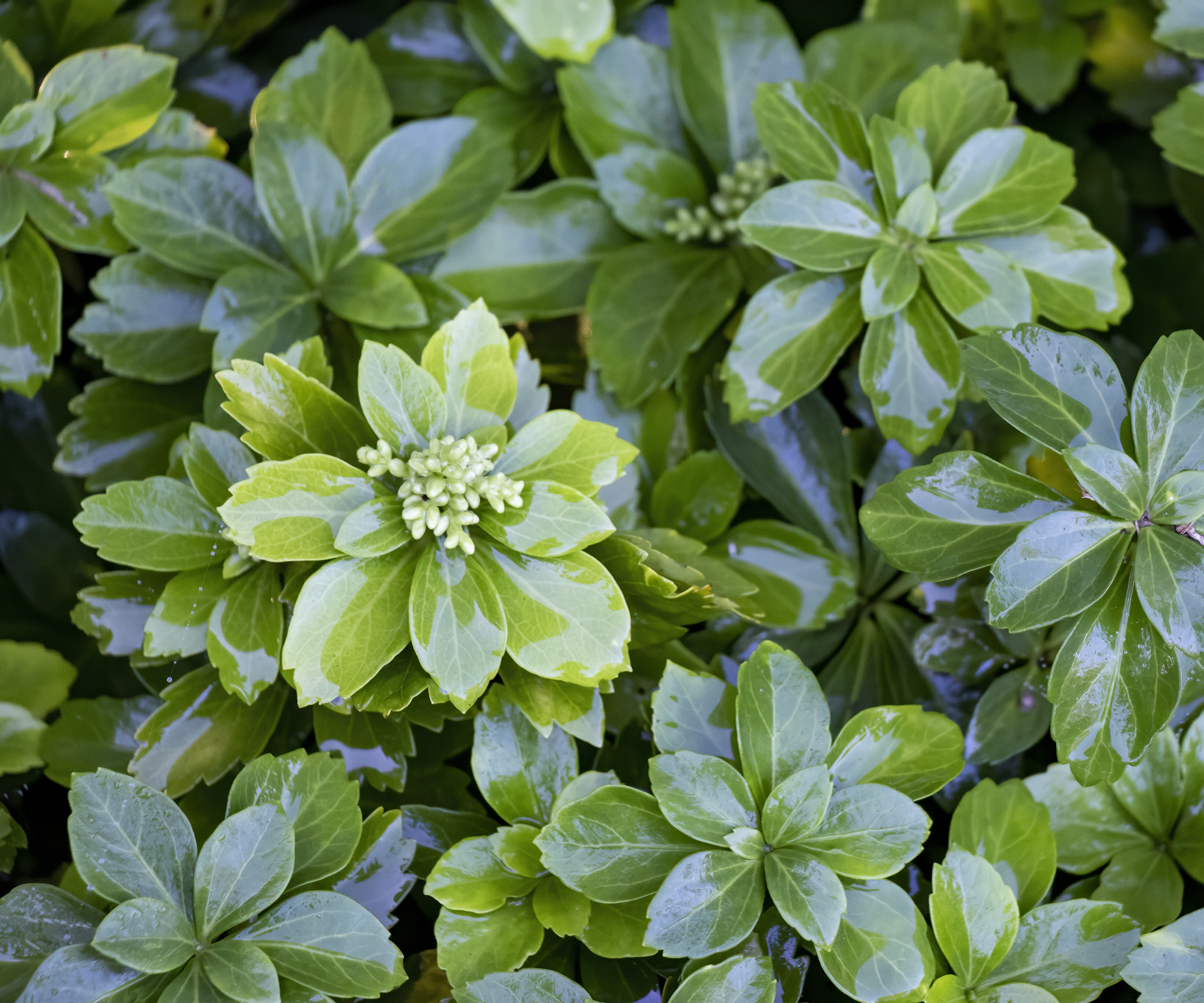How to grow Japanese spurge – the ultimate evergreen ground cover plant
Japanese spurge is an ideal option if you are looking to add greenery to tricky areas of the yard


Japanese spurge, Pachysandra terminalis, is a low-growing plant that is native to Japan and China. Over recent years, Japanese spurge has become a popular landscaping ground cover, with garden designers valuing its resilience and vigor, planting in tricky spots along pathways and under shrubs and trees.
As a professional gardener, I have grown Japanese spurge in many private domestic gardens across the UK. In a short space of time, this plant can quickly establish and fill garden borders. One word of caution, however: while low-maintenance, Japanese spurge is a vigorous grower, and in some regions with wet soils it can be invasive. For this reason, always consult with your local government office as to what you should and shouldn't grow.
If you are looking for evergreen ground cover plants or ground cover plants to hide tree roots, Japanese spurge might be the plant for you. Here, I share all I know about growing and caring for this tough, vigorous ground cover, helping you to add greenery to dappled and shaded areas.

How to grow Japanese spurge
Japanese spurge are some of the best ground cover plants for shade. However, in some regions they can be considered invasive plants. In cool, wet areas, such as in the northeast US, I suggest growing an alternative plant, as Japanese spurge can quickly take over in damp situations. In my experience, growing Japanese spurge in dry, shady spots will keep this ground cover plant manageable and under control.
Things to know about Japanese spurge

Japanese spurge is a reliable plant that is adaptable to a wide range of conditions and climates. It can be grown from US hardiness zone 4 to US hardiness zone 8, thriving in partial to full shade. While it can be slightly slow to establish, by the second and third years Japanese spurge will begin to form a dense, evergreen carpet.
Once established, you can easily lift and divide Japanese spurge plants. Using a garden spade, you can simply dig into a small section to grow elsewhere in your yard. And who wouldn't want more plants for free? Just make sure your clump has a good amount of rhizomes to help it reestablish and be sure to water well during the first month.
Japanese spurge requires minimal maintenance in the long term, and, what's more, it is an ideal ground cover plant to stop weeds, meaning less work for you, and more time to relax and unwind in your green garden.
Design expertise in your inbox – from inspiring decorating ideas and beautiful celebrity homes to practical gardening advice and shopping round-ups.
Japanese spurge starter plants are available from Walmart.
Growing advice for Japanese spurge

- Soil: Japanese spurge can be grown in any soil, although it will do best in acidic borders with a pH of 5.5 to 6.5. Applying an organic mulch or leaf mold in the fall months can be a good idea, helping to add nutrients and improve the structure of your soil.
- Light: This fast-growing ground cover can tolerate full to partial shade, growing well in dappled light when grown under large trees or established shrubs. While these plants might tolerate some sun, avoid planting in a full-sun yard, which will damage the foliage of your plants.
- Watering: Give your Japanese spurge plants a deep watering after planting and at least once a week in the first year. Once established, you do not have to worry about watering, as they will prove tough and self-sufficient even during hot, dry summers.
- Fertilizing: There is no need to fertilize Japanese spurge. These plants grow just fine without any need for applying fertilizer. Instead, mulch your borders once a year during the fall.
- Pruning: Pruning Japanese spurge is not necessary, as this low-growing plant rarely reaches above your knee. I recommend lifting, dividing and thinning your Japanese spurge plants every few years to encourage new growth. This is best done in the spring when the temperatures begin to rise.
FAQs
Do Japanese spurge plants produce flowers?
Japanese spurge plants produce small white flowers in late spring and early summer. While the flowers are diminutive, they are no less beautiful, especially when grown on mass. What's more, pollinators will be grateful for this bounty of nectar on offer in your yard.
In no time at all, Japanese spurge plants will quickly cover bare soil to maximize greenery in your garden borders, maintaining interest for the fall and winter months with glossy evergreen foliage. Why not consider other full-shade perennials that can also be used as ground cover plants, such as tiarella or bugleweed? Our guide has all the information you need.

Thomas is a Content Editor within the Gardens Team at Homes and Gardens. He has worked as a professional gardener for both public spaces and private estates, specializing in productive gardening, growing food and flowers. Trained in Horticulture at the Garden Museum, he has written on gardening and garden history for various publications, including The English Garden, Gardens Illustrated, Hortus, The London Gardener and Bloom. He has co-authored a Lonely Planet travel book, The Tree Atlas, due out in 2024.

